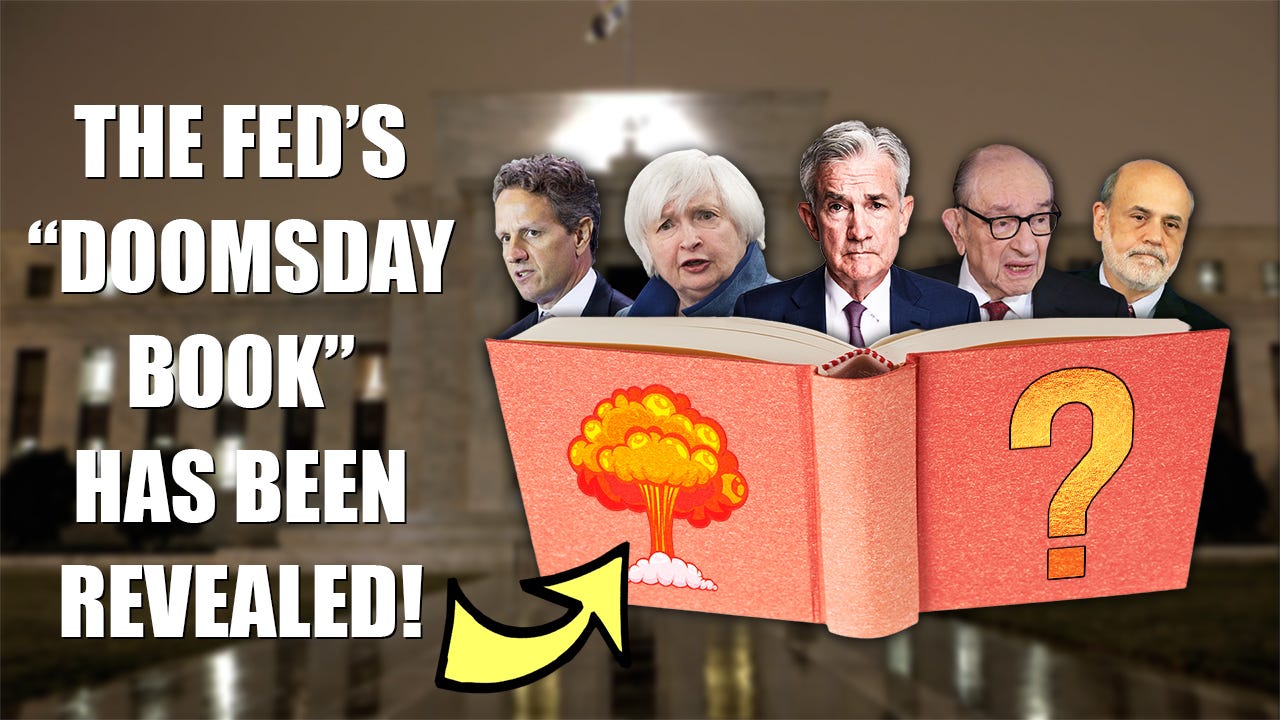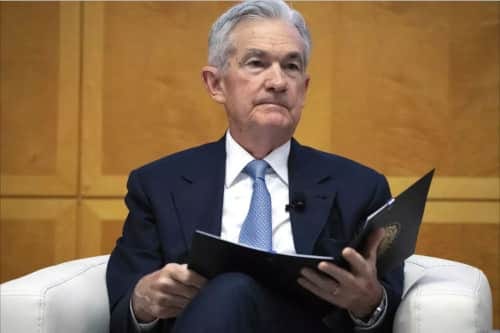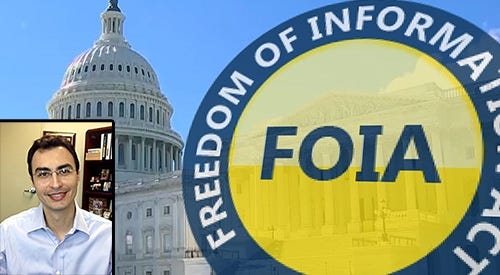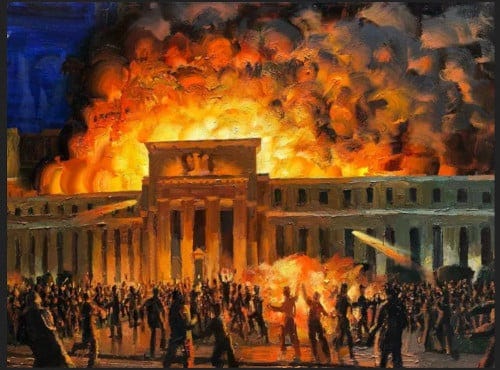The Fed's "Doomsday Book" Has Been Revealed
by James Corbett
Back in 2011, shareholders of insurance giant American International Group (AIG) filed a $40 billion class action lawsuit against the US government over the terms of its controversial bailout of AIG during the 2008 financial crisis.
In 2014, the trial case came to focus on an intriguing oddity. In cross-examination, the plaintiffs learned of a set of documents that the New York Fed—the heart of America's Federal Reserve central bank and the primary wheeler-dealer in the chaotic days of the global financial collapse—dramatically refers to as its "Doomsday Book."
This book, it was discovered, contained the various legal opinions and memoranda that the Fed used to determine what power it has to manipulate the financial system in the event of a large-scale crisis. And, it seemed, there was a good chance that the central broke its own rules with all its bailout shenanigans and financial sleight-of-hand during the 2008 collapse.
However, the plaintiffs' reasonable request to see the book and examine these supposed emergency powers was immediately rebuffed by the Fed. New York Fed lawyer John S. Kiernan, for example, was adamant that the Fed would not open up the book for the court. "Of the tens of thousands of documents that we have produced in this case, the Federal Reserve Bank of New York has sought to retain confidentiality because of the internal sensitivity of only this one," he told the United States Court of Federal Claims.
The court was eventually able to pry the relevant documents out of the Fed's clutches, but the Doomsday Book has remained under court seal for years . . . until now.
Late last year, an enterprising researcher managed to get his hands on a copy of the elusive book. And what that book contains should shock you (if you're paying attention).
What Is The Doomsday Book?
The very first thing to note about the "Doomsday Book" is that you can now read it for yourself! . . . kind of. I'll get into that qualification in a bit. But first, I do recommend you download the publicly available content for yourself. You can download it as a PDF file from The Wall Street Journal website HERE.
And, since Corbett Reporteers might not like to give WSJ their traffic (and because these types of files have a pesky habit of disappearing down the internet rabbit hole), I've also gone ahead and preserved a copy on my server HERE! (You're welcome!) Still, you never know when/if/how information online will go missing or become inaccessible, so don't dither. Download it now, while you can!
Alright, now that you have a copy saved locally, here's the first question: what is the doomsday book, exactly?
The short answer—taken from an article announcing its release last December—is that the doomsday book is "an internal document used to guide the Federal Reserve’s actions during emergencies."
The longer answer is that the Doomsday Book is not a book at all. Instead, it's a collection of documents, legal opinions and memoranda that have been assembled and maintained by the Federal Reserve Bank of New York (FRBNY) over the course of decades. It was first compiled in the 1990s and has been revised four times, thus creating five versions of the "book" (that we know of). The latest version is Version 5.0 and it includes extensive revisions to various memoranda and opinions—revisions that were made to reflect the legal and regulatory changes wrought by the 2010 Dodd–Frank Wall Street Reform and Consumer Protection Act (see the "Note on Legal Evolution" on page 46 of the PDF document).
According to the Prefatory Matters section of the latest revision (page 44 of the PDF document):
The Doomsday Book is intended to help lawyers of the Federal Reserve Bank of New York aid their clients in crisis management. It was originally distributed to a limited set of lawyers and select senior staff members. This has changed with time, as more lawyers are drawn into crisis management. Now, all FRBNY lawyers receive a copy of the Doomsday Book.
The same passage also explains that the book "is not intended as an 'off-the-shelf' solution to any particular crisis" but as a "playbook" of general advice that may require modification depending on the circumstances.
So, the next question to be answered is . . .
How Did The Doomsday Book Get Released?
As indicated above, the Doomsday Book first came to the public's attention during the 2014 Starr International Co. v. United States trial, in which AIG shareholders were suing the government over the Fed's questionable bailout practices. (If you need a primer on that trial to bring you up to speed, you're in luck! I wrote an article about the case and its startling conclusion in these very pages nine years ago!)
During the trial, Timothy Geithner—who was president of the FRBNY during the global financial collapse—not only confirmed the existence of the book, but admitted that he relied on it to guide his actions in the crisis. “It’s kind of a big, fat binder,” he told the court, adding that “we did occasionally go back and consult it as things were eroding around us. . . . It was a reference material that described precedent and authority.”
And, as also noted above, although the plaintiffs' lawyers were able to get their hands on a copy of the book's index, the Fed successfully petitioned the court to keep the documents under court seal. Some quotations from the book were read into the court record during testimony, but, aside from that, no specific information on the documents was forthcoming.
Enter Emre Kuvvet. He's a Professor of Finance at Nova Southeastern University who, recognizing the importance of this elusive emergency operations document, filed a Freedom of Information Act request to the Board of Governors of the Federal Reserve System for the book . . . and was promptly rejected. Not one to give up so easily, Kuvvet then filed a simple Freedom of Information request with the FRBNY and—"for reasons unknown to me," as Kuvvet wryly observes—was duly provided the 122-page document that you just downloaded.
Now, in order to understand why the FRBNY's compliance with this request is so unusual, you have to understand the difference between the Board of Governors of the Federal Reserve System—the twelve-member panel appointed by the US president and confirmed by the US Senate to oversee the Federal Reserve System—and the Federal Reserve Bank of New York—the most powerful of the twelve regional banks that are responsible for the banking operations of the Federal Reserve System.
If you need a refresher on the deliberately confusing structure of the United States' "decentralized central bank," might I humbly suggest that you watch (or re-watch) Century of Enslavement: The History of The Federal Reserve? If and when you do so, you will see for yourself the moment when Federal Reserve Board Senior Counsel Yvonne Mizusawa argues in court that the Federal Reserve Regional Banks (not the Board) are private banks and thus not "persons under FOIA."
In other words, the Federal Reserve argues that the records of the Fed's regional banks—including their legal opinions, memoranda, internal records and, of course, the New York Fed's coveted Doomsday Book—are not subject to the Freedom of Information Act. However, no doubt concerned with the optics created by an un-FOIA-able central bank, the FRBNY has a "Freedom of Information Requests" page on its website in which it boasts that "the New York Fed is committed to complying with the spirit of FOIA and has had a Freedom of Information Policy or related practice for decades."
In other words, the New York Fed does not believe itself to be legally obligated to give up any of its precious documents . . . but it might occasionally choose to do so if you ask nicely. Accordingly, the FRBNY provided Kuvvet with versions 4.1 (2006) and 5.0 (2012) of the book's index. He then set to work writing an extensive article about the documents, "What Is in the Federal Reserve’s Doomsday Book?" (paywalled content), which was published in the Spring 2024 edition of The Independent Review.
The title of Kuvvet's article raises another very good question, namely . . .
What Is In The Doomsday Book?
Remember when I said you can download the book for yourself . . . kind of? Well, here's the rub: the 122-page PDF document that was released in 2022 and is now available for download is not the full collection of documents. Rather, what has been released is an introduction to the book.
Spread out over more than 100 pages, this introduction includes an extensive index of the contents of the full book; a listing of the titles and dates of the various agreements, memos and opinions that form the full collection; the Fed's own internal notes explaining what the collection is; an explanation of what the various sections of the book contain; and even an especially revealing explanatory passage containing the frank admission that "the powers of a Federal Reserve Bank are far greater than is commonly supposed" (page 33).
The latest version of the Doomsday Book introduction reveals that the book consists of three volumes:
Volume I – Pre-2008 Legal Documents
Volume II – Post-2008 Legal Documents
Volume III – Memoranda
For a complete listing of what documents are contained in each volume and what subject each document covers, you can browse through the confusing and repetitive PDF document or you can read Kuvvet's article for a more logical (if still ponderous) listing.
The introduction to Version 4.1, however, does helpfully break down the legal memoranda in the book into broad categories of memo:
"Powers Opinions," which "discuss the legal authority of Federal Reserve Banks to provide various kinds of emergency services and facilities that they are not in the habit of providing under ordinary circumstances";
"History and Policy," documenting the history of the Federal Reserve's policy decisions and previous emergency actions;
"Operational Issues," which "discuss legal aspects of operational issues, and are probably mostly of interest to attorneys";
"Bankruptcy and Insolvency Law Issues," dealing with the legal risk of lending to bankrupt or insolvent firms;
"International Issues," dealing with the cross-border operations the Fed might employ during international crises;
Etc.
As for the agreements, memoranda and opinions themselves, there are some incredibly interesting documents listed that no doubt contain many valuable nuggets of information about the Fed's internal processes.
For the policy wonks and financial eggheads in the crowd, the agreements contained in the book provide a wealth of data on what the Fed believes it is empowered to do during times of crisis. As Kuvvet notes in his "What Is in the Federal Reserve’s Doomsday Book?" article, for instance:
In the Section 13(13) Lending Agreement subsection, the FRBNY states that the section 13(13) lending authority can be useful for nonbank government securities dealers. The FRBNY believes that Federal Reserve Banks are authorized to accept ineligible collateral to supplement eligible collateral.
Conspiracy realists, meanwhile, will no doubt be intrigued by the "Chronology of Events at the Federal Reserve Bank of New York After the World Trade Center Attack" in the "History and Policy" section of the book. According to the Fed's own description on page 35 of the PDF, the document "begins with the morning of September 11, 2001 and concludes with the full resumption of operations on September 24" and "discusses all significant events: financial, operational and humanitarian."
So, how does the New York Fed's internal history of the 9/11 false flag differ from the public version—"The Federal Reserve's Response to the Sept. 11 Attacks"—on the Federal Reserve Bank of St. Louis' website? Does it include information on the puzzling monetary events taking place in the lead-up to those attacks—events that include the largest June-August spike in the currency component of the M1 money supply in half a century? Does it hold the clue to the Die Hard 3-esque gold heist that may or may not have taken place in New York on the day of the attacks?
Good questions!
Unfortunately, until such time as some intrepid reporter, professor of finance or Corbett Reporteer jumps through the hoops of the New York Fed's Freedom of Information Requests process and pries this specific document—or any of the other documents listed in the Doomsday Book index—from the bankster's clutches, we won't know for sure. After all, we only have the titles of these documents and a cursory description of them from the Doomsday Book's index.
All of this leads us to the most important question . . .
What Does It Mean?
The first-order takeaway from the Doomsday Book is that the Fed apparently believes that it has the authority to do quite a bit more in the event of an emergency than has been specifically authorized by the Federal Reserve Act.
For a line-by-line, blow-by-blow analysis of these presumed powers and the Fed's arguments surrounding them, I highly suggest reading Kuvvet's article. In it, you will learn, for instance, that the Fed believes it has the authority to bail out cities during "emergency situations" . . . whatever those are.
Surprisingly, the FRBNY states that section 13(3) lending authority extends to municipalities, and that there is an additional independent section 14(b)(1)17 lending authority for municipalities. Thus, the FRBNY considers that it has the legal authority to rescue municipalities in emergency situations. The Doomsday Book does not define what those “emergency situations” are.
Even more remarkably, the Fed also reserves the power to receive "equity kickers"—that is, take an ownership stake in a company and presumably even take over a company entirely—when engaged in emergency lending. This is the power that was under scrutiny during the aforementioned AIG shareholder lawsuit, Starr International Co. v. United States, and it raises the specter of the Fed taking over and potentially running companies or even vast swaths of the economy in the face of a truly catastrophic economic collapse.
Per Kuvvet:
Lenders receive equity kickers frequently to compensate for risk. The FRBNY received an equity kicker in the AIG loan. The FRBNY considers that the scope of the power to receive an equity kicker remains uncertain, particularly whether the National Bank Act restrictions on equity kickers apply to Reserve Banks. The memorandum titled “Equity Kickers and Reserve Bank Loans” contends that they do not. Lenders sometimes employ guarantees appurtenant to financial transactions, and often employ guarantees in workout contexts. The memoranda titled “AIG Loan Restructuring-Reserve Bank Powers” and “Authority of Reserve Banks to Issue Guarantees on Behalf of Depository Institutions” explore the limits of the guarantee power.
But perhaps the most brazen statement of the Fed's self-proclaimed emergency power comes in the section on "Powers Opinions" on page 33 of the Doomsday Book PDF.
The powers opinions discuss the legal authority of Federal Reserve Banks to provide various kinds of emergency services and facilities that they are not in the habit of providing under ordinary circumstances. [. . .] A constant theme runs through them all: the powers of a Federal Reserve Bank are far greater than is commonly supposed.
This is perhaps the most succinct statement of the banksters' arrogance that have ever been set to paper. In other words, the Fed's own internal document is gloating that the Fed reserves itself powers that the public do not know about and presumably would not approve of if they did. This does not trouble the Fed or its legal counsel in the slightest.
So, what are we to make of this galling arrogance?
Writing in The Hill, op-ed contributor Doug Branch—whose bio notes that he served as Deputy Staff Director of the Joint Economic Committee (JEC) and Deputy Chief of Staff to a Financial Services Subcommittee Chairman in the US government—predictably opines that what is needed is for the government to step in and rein in the Fed, passing legislation to "unambiguously authorize" those emergency powers that the Fed claims and that Congress deems necessary. Congress should also, in Branch's opinion "reserve the right to disapprove [of a Fed emergency power] through an after-action process."
Although Branch's answer sounds perfectly straightforward and reasonable—reasonable to statists who believe in The Most Dangerous Superstition, at least—it fails to grasp an extremely basic fact, one that governs all such "emergency powers" and "states of exception." Namely, the fact that power—especially emergency power—is a thing that is demonstrated, not codified.
Case in point: the Starr International Co. v. United States case in which the Doomsday Book's existence was first revealed. If you read my 2015 article on that case, you'll know that case's insane conclusion. The court ultimately ruled that the Fed had indeed overstepped its powers in the course of the AIG bailout . . . but imposed no penalty and awarded the prosecution nothing.
Based upon the foregoing, the Court concludes that the Credit Agreement Shareholder Class shall prevail on liability due to the Government’s illegal exaction, but shall recover zero damages, and that the Reverse Stock Split Shareholder Class shall not prevail on liability or damages.
Naturally, the Fed took this decision as vindication that it had acted legally.
The Federal Reserve strongly believes that its actions in the AIG rescue during the height of the financial crisis in 2008 were legal, proper and effective. The court's decision today in Starr International Company, Inc. v. the United States recognizes that AIG's shareholders are not entitled to compensation for that decision, and that the Federal Reserve's extension of credit to AIG prevented losses to millions of policyholders, small businesses, and American workers who would have been harmed by AIG's collapse during the financial crisis. The terms of the credit were appropriately tough to protect taxpayers from the risks the rescue loan presented when it was made.
This is how power operates. It acts—illegally if need be—and the judge comes along afterward to clean up the mess.
The fact that the Fed's powers have not been delineated down to the nth degree is a feature of the system that the banksters have created, not a bug, as Doug Branch suggests. The banksters who own and run the Fed and who control Congress through blackmail, bribery and extortion are not going to make the mistake of stating exactly what powers they do and don't possess. And they're certainly not going to allow such limitations on their powers to be codified into law. Instead, they will act as power always acts: unilaterally, unapologetically, and without asking for permission.
Sorry (not sorry) to burst your bubble, Mr. Branch, and all those other "common sense" thinkers who believe that government is the answer to the problem that was created by the (bankster-controlled) government, but there is no tinkering around the edges here. No amount of legislation is going to make the entire corrupt Federal Reserve System into anything other than the bankster cartel that it was designed to be.
No, we do not need to "rein in" the Fed or set up yet another government committee to try to codify its powers. We need to abolish the Fed itself and bring about a separation of money and state altogether. That is the real takeaway from the Fed Doomsday Book.
For enterprising researchers out there, I look forward to hearing about your own exploration of these documents and your own adventures with the FRBNY's "Freedom of Information Request" process.
The cockroaches always scurry from the light, so let's see if we can shine some more of it on this whole sordid mess.
Source: The Corbett Report





Comments
Post a Comment